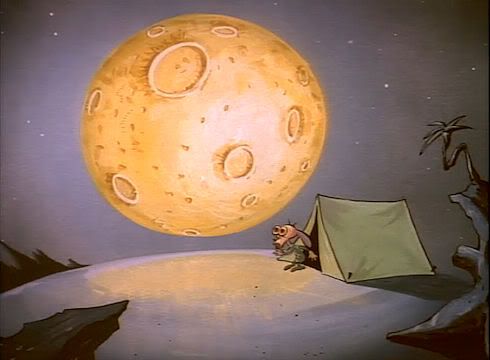
Posted on 03/14/2011 4:20:31 PM PDT by TaraP
Japan's massive 8.9-magnitude earthquake and deadly tsunami in Japan generated world-wide viral headlines about the destructive environmental power of the upcoming "supermoon."
The term "supermoon" originated on the website of astrologer Richard Nolle who reported that a new or full moon at 90% or more of its closest perigee (the point in the orbit nearest to the center of the earth) qualifies as a "supermoon," making the March 19 full moon a supermoon, because the crest of the moon’s full phase comes within an hour of the moon’s closest point to Earth.
According to Dr. James Garvin, chief scientist at NASA's Goddard Space Flight Center, a 'Supermoon' is a situation when the moon is slightly closer to Earth in its orbit than on average, and this effect is most noticeable when it occurs at the same time as a full moon. So, the moon may seem bigger although the difference in its distance from Earth is only a few percent at such times.
It is called a supermoon because this is a very noticeable alignment that at first glance would seem to have an effect. The 'super' in supermoon is really just the appearance of being closer, but unless we were measuring the Earth-Moon distance by laser rangefinders (as we do to track the LRO [Lunar Reconnaissance Orbiter] spacecraft in low lunar orbit and to watch the Earth-Moon distance over years), there is really no difference.
The supermoon really attests to the wonderful new wealth of data NASA's LRO mission has returned for the Moon, making several key science questions about our nearest neighbor all the more important.
The effects on Earth from a supermoon are minor, and according to the most detailed studies by terrestrial seismologists and volcanologists, the combination of the moon being at its closest to Earth in its orbit, and being in its 'full moon' configuration (relative to the Earth and sun), should not affect the internal energy balance of the Earth since there are lunar tides every day. The Earth has stored a tremendous amount of internal energy within its thin outer shell or crust, and the small differences in the tidal forces exerted by the moon (and sun) are not enough to fundamentally overcome the much larger forces within the planet due to convection (and other aspects of the internal energy balance that drives plate tectonics). Nonetheless, these supermoon times remind us of the effect of our 'Africa-sized' nearest neighbor on our lives, affecting ocean tides and contributing to many cultural aspects of our lives (as a visible aspect of how our planet is part of the solar system and space).
But contrary to the widespread speculation, Japanese March 11 earthquake is not an example of a supermoon causing deadly environmental effects. The March 11 moon is exactly the opposite, since the moon is not particularly close to Earth, nor is it full or new moon (aligned with the sun and Earth). The moon on March 11 is close to first quarter--at a right angle to the Earth/sun line. Thus--according to the supermoon-earthquake connection theory--the moon’s effect on earthly water and solid rock tides should be at its least.
A little rational thought goes a long way. The moon is approaching perigee half the time and its approaching apogee the other half. Basically you have two weeks of every month to choose a disaster. However it requires ignoring any disasters that happen during the other two weeks.
Technically the moon will never be closer because its slipping away at a rate of a couple of inches every year.
Full moon and New moon include the concept
of “syzygy” with the sun/moon/earth in a straight
line. The gets either opposing gravitational pull or
a sum of moon+sun gravitation. At perigee for
the moon, it makes its greatest contribution. I’m
not certain when perigee occurs for the earth/sun
distance. Certainly an equinox puts the largest
diameter of the earth in line with the sun, thus
placing the surface closer.
“Moonageddon: on March 19, our nearest neighbour will be at its closest since 1993.”
Earthquakes, tsunamies and u-235, oh my!
I am scared to death, I tell you...scared to death.
bflr

Honestly, I wouldn’t be surprised if it did happen. At the rate we are going right now, it seems something largely newsworthy is happening once a week or so. Think about it...Egypt’s unrest and Mubarak stepping down, civil war in Libya almost a week later, unrest spreading across the region in the following weeks, and now a massive earthquake/tsunami hitting Japan.
OMG STOP GLOBAL SUPERMOON!
ALERT CONGRESS!
Lobby your congressman to outlaw earthquakes and tsunamis!
Thanks thanks.
Wonderful.
Another thread to invite being flayed alive on! LOL.
Sigh.
You mean...the moon doesn’t weigh more when it is full?
/s
Depends on what its full of.
The moon will not cause any problems here.
One possible analysis....
The supermoon is optimum, i.e. max gravity.
The earthquakes now show that as the gravitational pull grows failure occurs at a point of lesser stress than when the force is at a maximum, supermoon
It was to be expected as an unpredictable possibility. It was not predictable because the failure stress is unknown and can’t be calculated.
Next time, a prediction can be made on the basis of time before supermoon
We won’t have to wait long to find out.
 |
||
| · join · view topics · view or post blog · bookmark · post new topic · subscribe · | ||
Disclaimer: Opinions posted on Free Republic are those of the individual posters and do not necessarily represent the opinion of Free Republic or its management. All materials posted herein are protected by copyright law and the exemption for fair use of copyrighted works.